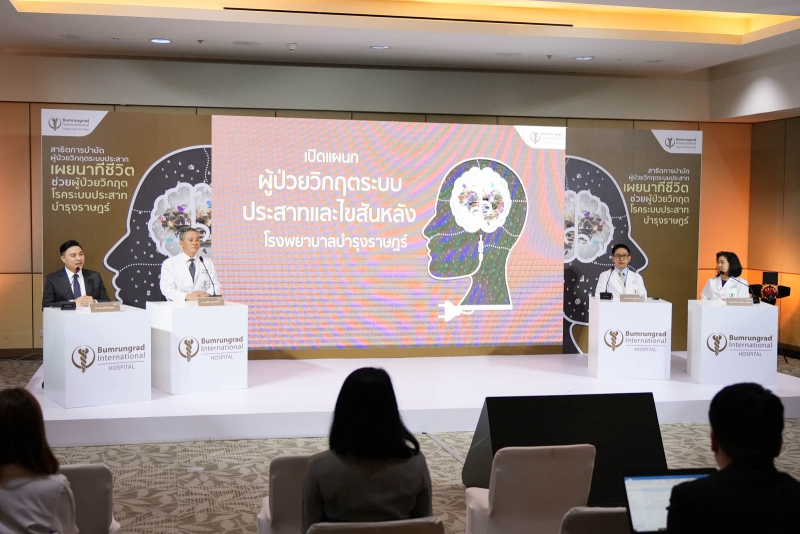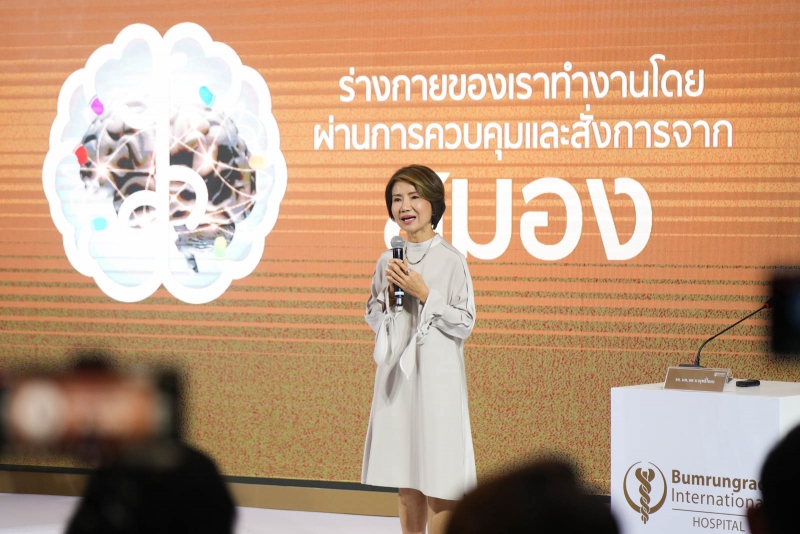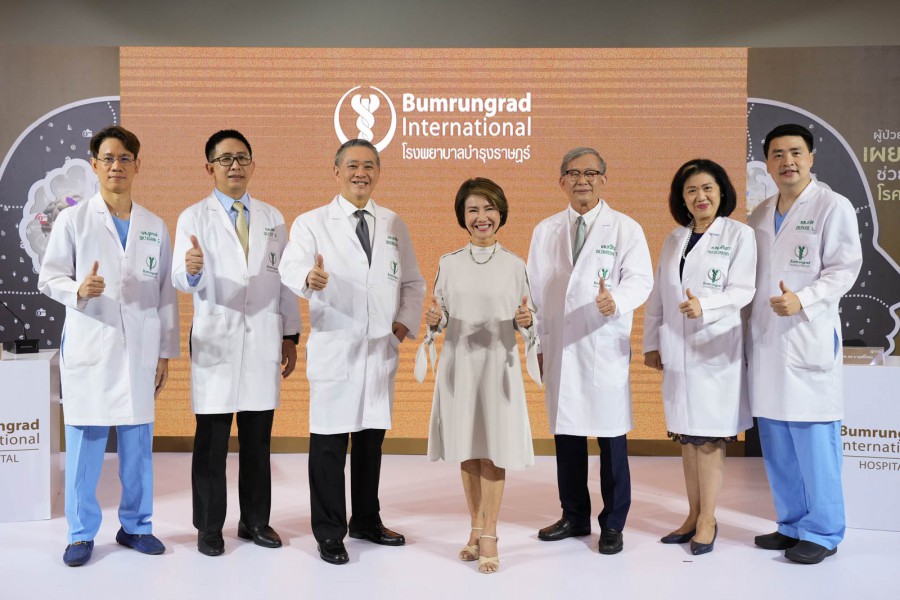Bumrungrad launches the Neurocritical Care Unit (NCCU), strengthening our ICU capabilities to treat life-threatening and critically-ill neurological patients.
The WHO states there are hundred kinds of neurologic diseases, one of the most common diseases is stroke, which is the second leading cause of death and the third leading cause of disability. According to a global survey performed in 2019, there were more than 101 million total cases of stroke, with new cases totaling 12.2 million and 6.5 million stroke-related deaths. In Thailand, there were 53 stroke-related deaths per 100,000 people, continuing the upward trend of such deaths.


Mrs. Artirat Charukitpipat, CEO of Bumrungrad International Hospital, states, “the nervous system is complex because it manages and controls the other bodily organs and functions, like movement, feelings, speech, breathing, connecting the brain and the organs through the spinal cord. Hence, any neurologic condition can be deadly or lead to permanent disability. However, much of the danger of neurologic disease can be avoided or mitigated through early detection and proper treatment by experienced neurological team.”
Dr. Roekchai Tulyapronchote, Director of the Neuroscience Center and Neurologist at Bumrungrad International Hospital, states, “the Bumrungrad Hospital NCCU has 4 main advantages: 1) having team of experienced specialist doctors who have the expertise to accurately make diagnoses and provide treatment plans; 2) multidisciplinary teams working seamlessly; 3) using the most up-to-date medical technology and equipment; and 4.) Caring for patients in every crisis 24 hours a day, because each minute the brain lacks circulation, one million brain cells will die – potentially causing disability or death. The Bumrungrad Hospital NCCU cares for patients experiencing severe or life-threatening neurologic events, which may require high-risk procedures, like neurosurgery or spinal surgery, as part of treatment. Some example conditions are ischemic stroke, hemorrhagic stroke, brain hemorrhage, aneurysm, acute spinal injury, and brain tumor. We treat these conditions with advanced medical technology.”

Associate Professor Dr. Yot Navalitloha, Neurosurgeon at Bumrungrad International Hospital, shared that most patients come into the hospital for 2 principal reasons: stroke & vascular disease, especially aneurysm and brain tumor. On average, he operates on about 200 patients per year at Bumrungrad International Hospital. Such procedures are very important and delicate. For example, a patient had a 2-inch brain tumor and required surgery immediately because if left in place it may cause further damage like paralysis. Now the patient has gone back to his normal life. One patient was diagnosed with an extremely large brain aneurysm, which was about 1.25 inches in size. Brain aneurysms often occur due in key arterial pathways, deep in the brain. Performing such neurosurgery requires expert teams of doctors. Further, complications can occur at any time, hence the NCCU, with our specialist staff, plays an important role in the care and monitoring of our patients 24/7. Round the clock care and monitoring of our NCCU patients is needed due to the risk of hemorrhage causing additional damage. Other complications include weakness, partial paralysis, difficult speech, blindness, memory loss, or loss of feeling.
Professor Dr. Sirintara Singhara Na Ayudhaya, Interventional Neuroradiologist at Bumrungrad International Hospital, states that, “in addition to traditional neurosurgical procedures, Bumrungrad can perform advance procedures, like neuro interventional radiology, which can both diagnose and treat cerebrovascular (blood vessel of the brain) and spinal conditions. Also Bumrungrad can perform minimally invasive procedures, which only require a small incision (1-2mm) due to the use of miniaturized medical tools navigated by diagnostic imaging, reducing time spent in the ICU and the risk of post-procedural complications.
Neuro-radiological interventions can treat stroke and acute arteriovenous blockage, brain aneurysm, vascular birthmark since birth or after, and spinal vascular disease. At Bumrungrad, bi-plane imaging system is used to determine the location, size, and shape of the blood clot, blockage, aneurysm, or vascular birthmark in the brain or in the spinal cord. The strength of the bi-plane imaging system lies in its accuracy and the patients can resume their normal or near normal life sooner. The MRI assists doctors to determine the location, size, and shape of the blood clots or swollen blood vessels. Also the age and health of the patient must be considered to select the most appropriate and effective treatment option.


Importantly, after the patient is treated for any life-threatening or disability-prone conditions, at the NCCU, close follow-up care and treatment will begin to ensure patient safety. To facilitate these aims, the NCCU is designed to be the safest environment possible for our patients and is equipped with individualized patient heart rate and circulatory system monitors connected to a central monitoring system, enabling our ICU nurses to track each patient’s vital signs to provide appropriate care. The NCCU strengthens the capacity of the ICU to ensure the best possible treatment outcomes for all our patients.
